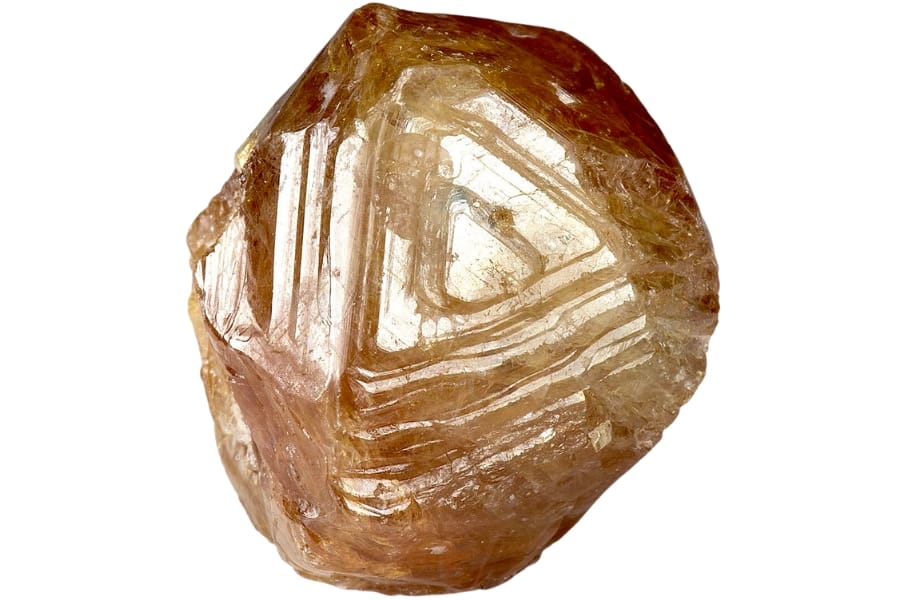Finding out if a sapphire is real or fake can feel like a puzzle that needs to be solved. A real sapphire is a treasure because it is beautiful and can be used to make different kinds of jewelry.
But not every stone that looks like a sapphire is a real one. Some of them are fakes made to make people think they are valuable. You can be like a gemstone detective when you know how to tell a real sapphire from a fake one.
Anyone can learn to tell if a sapphire is real or a clever copy with a little knowledge and practice. It’s a good skill to have if you like gems, and it makes finding a real sapphire even more exciting.
We’ll get on to identifying real and fake sapphires, and by looking out for these clues, you can better tell if you have a genuine sapphire or not!
Understanding Natural Sapphire And Why Fakes Are Common
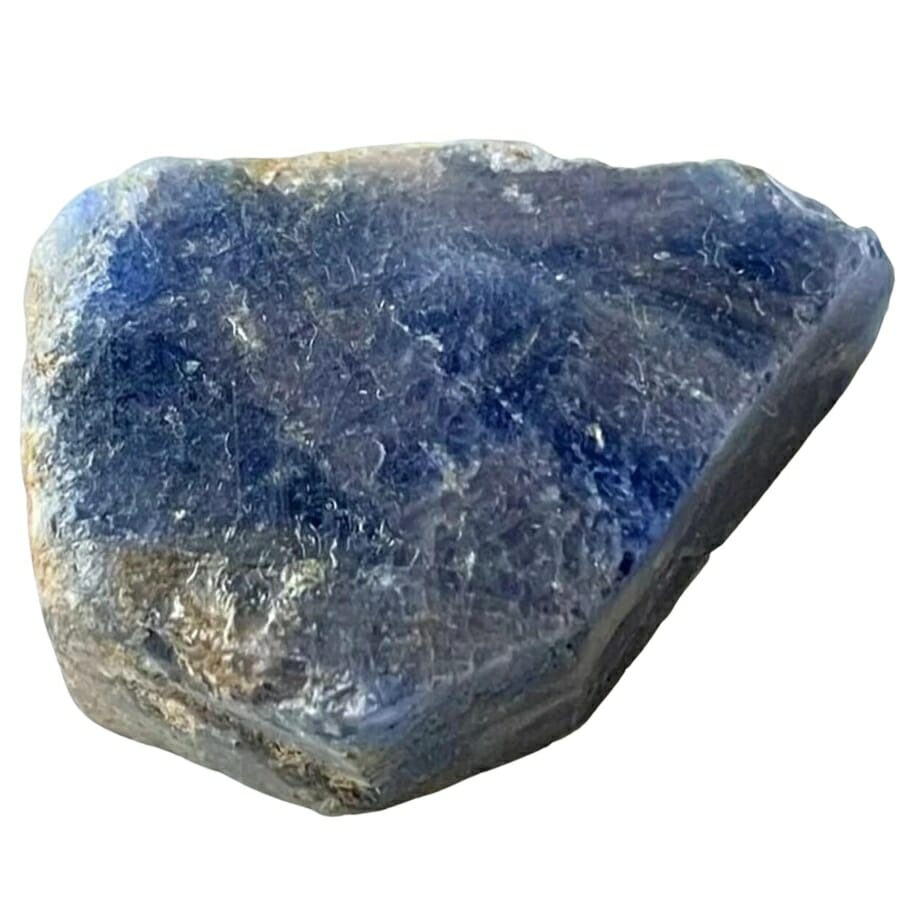
Sapphires are beautiful, hard stones that are made deep inside the Earth’s crust. They are made when minerals, like aluminum oxide, are heated up and put under a lot of pressure and heat.
These conditions create the crystals that we recognize as sapphires. Their toughness comes from their hardness; they score a 9 on the Mohs scale. The only natural item harder than a sapphire is a diamond!
People love to put sapphires in rings, necklaces, and earrings because they are strong and come in beautiful colors. They are hard to scratch and can last for a long time.
Some electronic devices also use sapphires because they can withstand rough conditions without breaking them. On top of that, they are used to protect some cameras and scanners.
There are many reasons why sapphires are valuable. Because of their natural beauty, strength, and rarity, they are often used to make jewelry. The longer a sapphire has been forming under the Earth, the more valuable it is.
Also, it takes a lot of work to mine and polish sapphires into beautiful gemstones, which adds to their value.
So whether it’s gracing a royal crown or being part of a high-tech gadget, sapphires have a blend of beauty and toughness that’s hard to beat!
Why you’re seeing more fake sapphire these days
The high price of real sapphires and the high demand for this beautiful gem are mainly to blame for the rise of fake sapphires on the market. Many people love the way sapphires look, but they may not be able to afford a real one.
Fake sapphires are a less expensive alternative. It’s easier and cheaper to make fake sapphires in a lab than to mine sapphires from the ground. Technology has also made it possible to make fake sapphires that look like real ones, making it hard for people to tell the difference.
Because sellers can make more money when they sell fake sapphires for the same price as real ones, more of them are being made and sold. Sadly, this also tricks people into thinking they are buying a real gem when it’s actually a fake.
How To Identify Real Sapphire
Finding a real sapphire in a sea of fake or man-made ones can seem like a hard task, especially since technology has made it possible for fake sapphires to look very real.
But if you know about the unique qualities of real sapphires, like their hardness, color variations, and inclusions, you’ll be able to tell the real ones from the fakes.
We know it’s hard to figure out what rocks you have, and we’re here to make it easier for you. You can identify your rocks by reading our guides to rocks and minerals from each state.
Not only does knowing more about a sapphire help you make a smart purchase, but it also helps you appreciate its real value and beauty more.
Check transparency
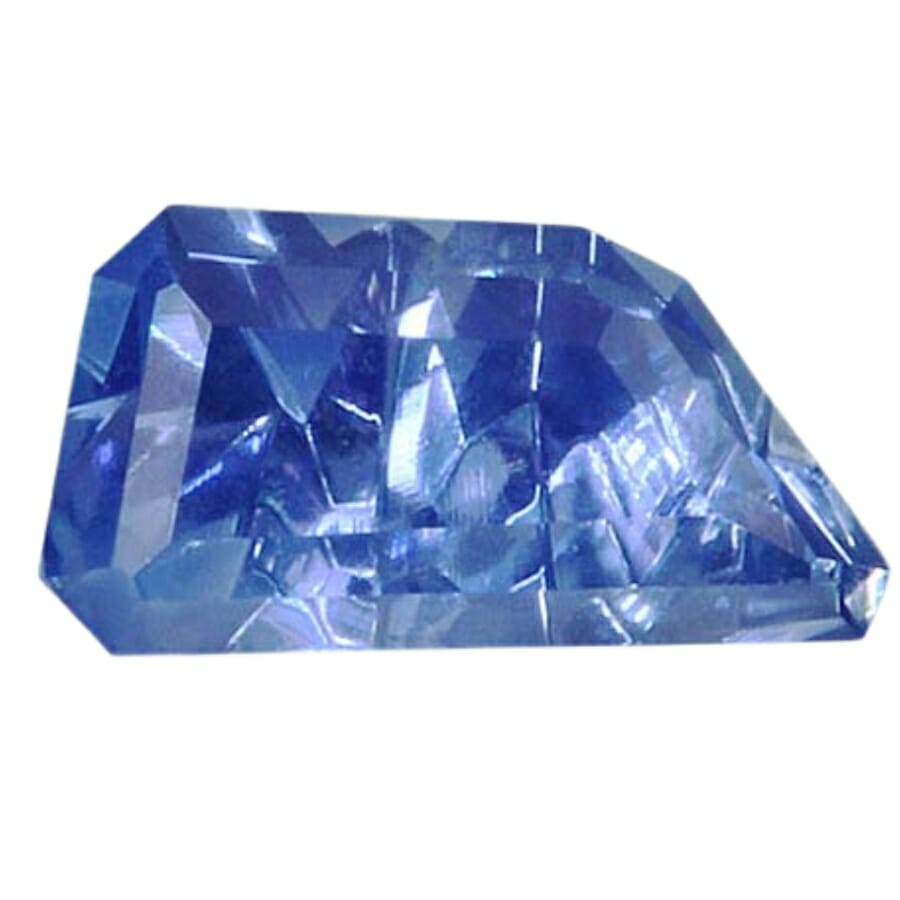
One way to figure out if a sapphire is real is to look at how clear it is. The way a gemstone lets light pass through it is called its transparency. Real sapphires can be clear, which means you can see right through them, or translucent, which means light passes through but blurs images.
Look through the sapphire by holding it up to a bright light. A real, high-quality sapphire should let light pass through it easily, showing clear transparency or a little blurriness, which shows it is translucent.
Put a flashlight or the flashlight on your phone right behind the sapphire and watch how the light moves through it. If it’s real and good, you should be able to see the light shining through.
Checking for transparency isn’t a foolproof way to find a real sapphire, but it can be one of the steps you take.
Do a breath test
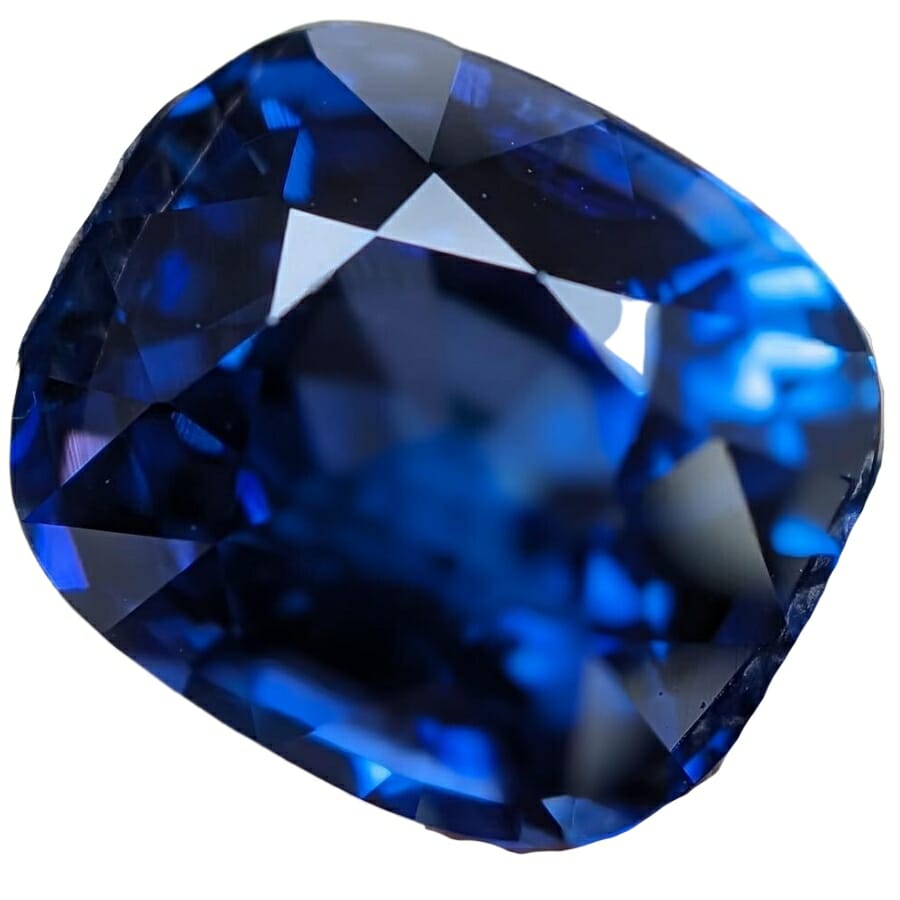
The breath test is a quick and easy way to find out if a sapphire is real, but it’s not as reliable as some other ways.
Make sure that the sapphire is clean first. You don’t want oil or dirt to change the results. Hold the sapphire up and breathe on it to fog it up, just like you would do to fog up a pair of glasses.
Look to see how long it takes for the fog to go away. Since real sapphires are good at transferring heat, the fog should clear up quickly, in a second or two. On the other hand, because they don’t conduct heat as well, fake sapphires or glass will stay fogged up for longer.
This test is simple to do, but it’s not always accurate. If you want to buy a sapphire, it’s best to use it along with other methods. Also, remember that the more ways you use to check if a sapphire is real, the more sure you can be that it is.
If you’re not sure about what you’re buying, it’s always a good idea to ask a jeweler or gemologist for their opinion.
Examine the color
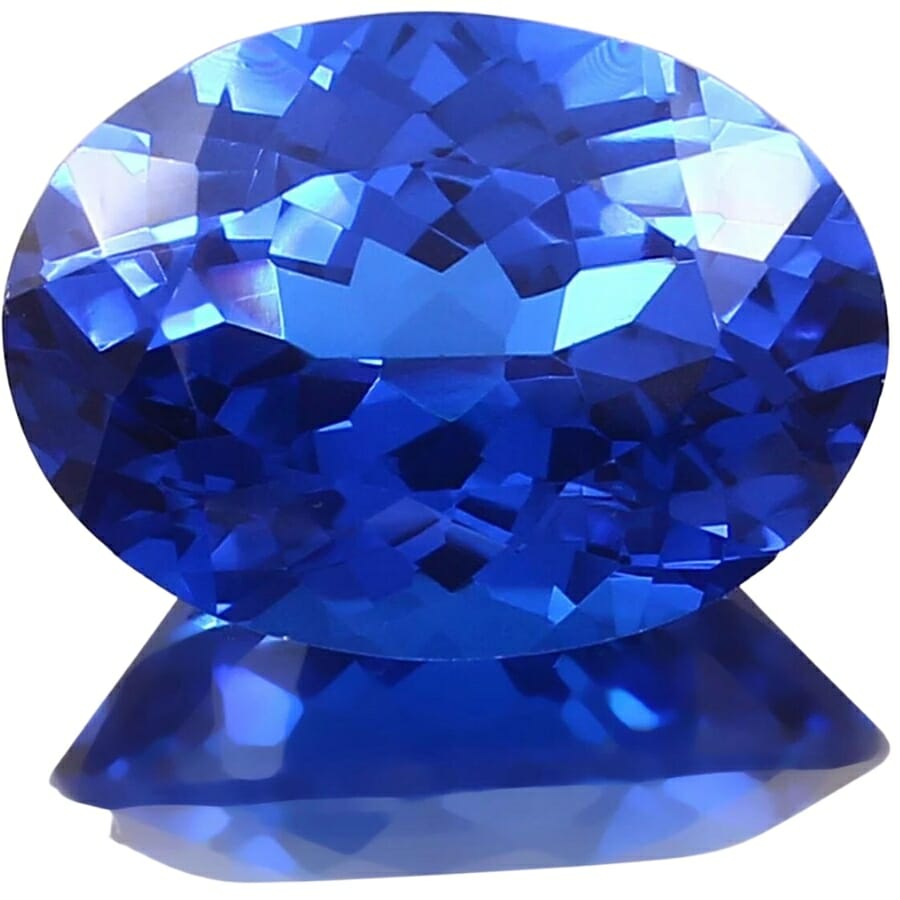
One of the best ways to tell if a sapphire is real or not is to look at its color. The color of real sapphires is deep and rich, not too dark or too light.
Look at the sapphire in the light of the sun. When the sun is out, the true color of a real sapphire is easy to see. The color should stay the same and be deep.
Under different kinds of light, some real sapphires change color. If your sapphire changes color from blue in daylight to purple in incandescent light, that’s a good sign it might be real.
Check to see if the color of the sapphire is the same all the way through. Some real sapphires may have slight color zoning, but fake or low-quality sapphires may have color that looks uneven or fake.
A real sapphire should have a color with a lot of depth. It should be a nice, balanced color, neither too dark nor too light. Looking at a sapphire’s color isn’t the only way to make sure it’s real, but it’s a good way to start making a decision.
Observe inclusions
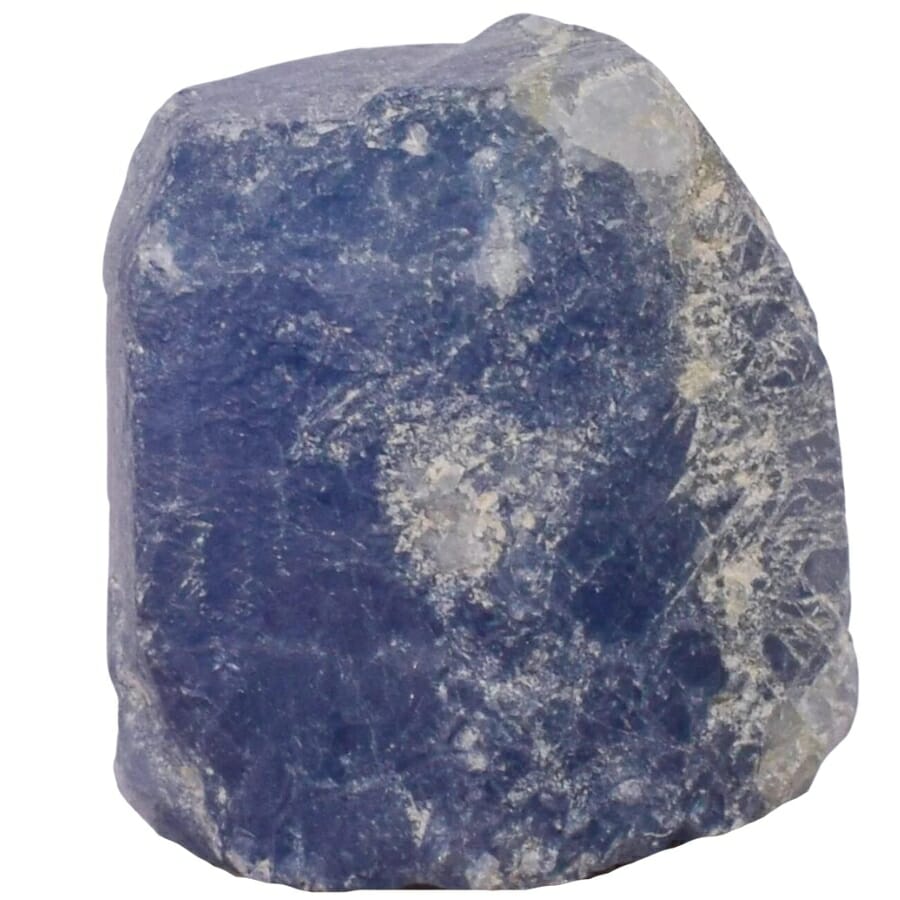
Inclusions are small flaws or pieces of foreign matter that are found inside gemstones. Inclusions are often found in real sapphires, but fake or man-made sapphires might not have any or might have different kinds.
Get a magnifying glass or a jeweler’s loupe to look at the sapphire more closely. Check the inside for tiny flaws like bubbles, cracks, or other minerals. Most real sapphires have some things in them.
Real sapphires might have tiny needles, crystals, or fingerprints inside them. On the other hand, bubbles are often a sign that the stone is made of glass or is a fake.
If you can, compare the sapphire to other sapphires you know are real or fake. Notice how the types and placements of the items are different.
Checking for inclusions is not a foolproof way to find real sapphires, but it is an important step. You can get better at finding real sapphires by learning what inclusions look like and getting help from a professional when you need it.
Perform a hardness test
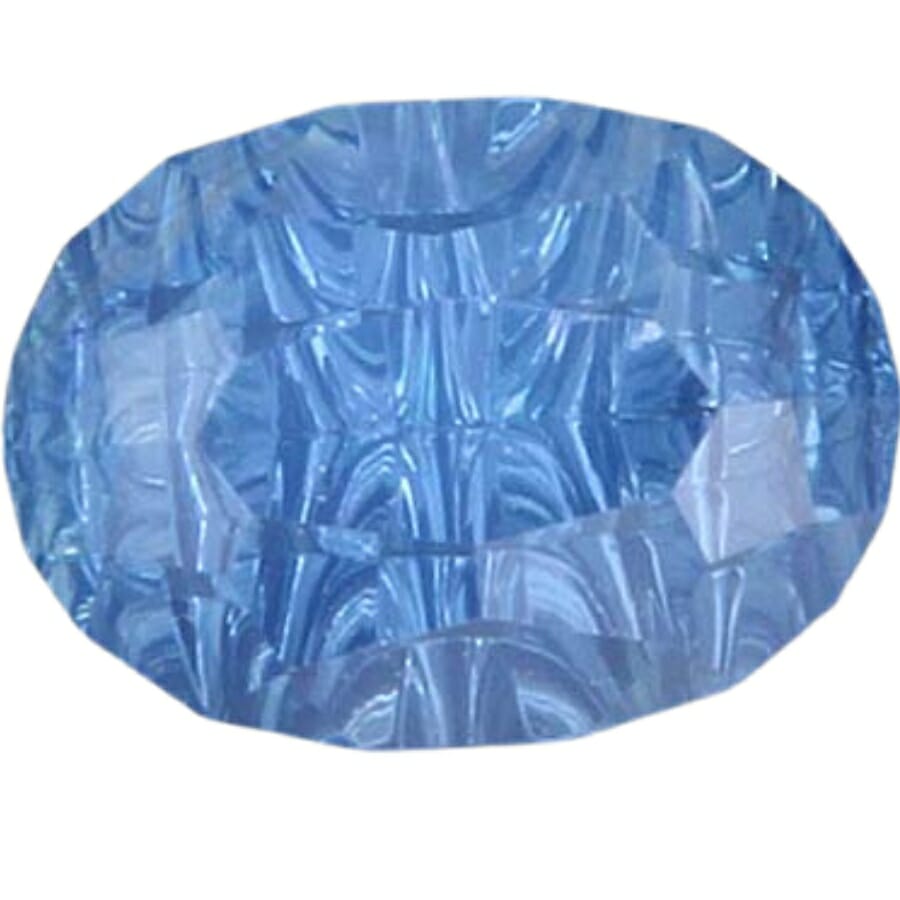
As sapphires are known for being very hard, a hardness test can help you figure out if a sapphire is real or not.
Find a place on the sapphire that doesn’t stand out. Try to scratch the sapphire gently with a tool that you know how hard it is, like a steel file (which has a hardness of 6.5).
The hardness of real sapphires is 9 on the Mohs scale, so nothing softer than that should be able to scratch them.
Try to scratch other stones with the sapphire or the other way around if you know how hard they are. A real sapphire shouldn’t get scratched when it scratches softer materials.
Gently rub the sapphire against a glass piece. Since glass is much softer than sapphire, a real sapphire should be able to scratch it without getting hurt.
When doing a hardness test, be careful not to use too much force, as this could damage the stone, especially if it turns out to be a fake sapphire that is softer. One way to make sure you have a real sapphire is to test how hard it is.
The Different Types Of Fake Sapphire And What They Look Like
People love sapphires because of their beautiful blue color, but not everything that sparkles is real. Some stones might look like real sapphires, but they are actually fakes made of things like glass, cubic zirconia, or synthetic corundum.
To spot these fake sapphires, you have to know how they look. They can be perfect, too bright, or lack the deep, mesmerizing blue of real sapphires. This helps buyers navigate the market and make smart decisions.
We’ll talk about the different kinds so you know what to look for when you want to buy real sapphire.
Blue Cubic Zirconia
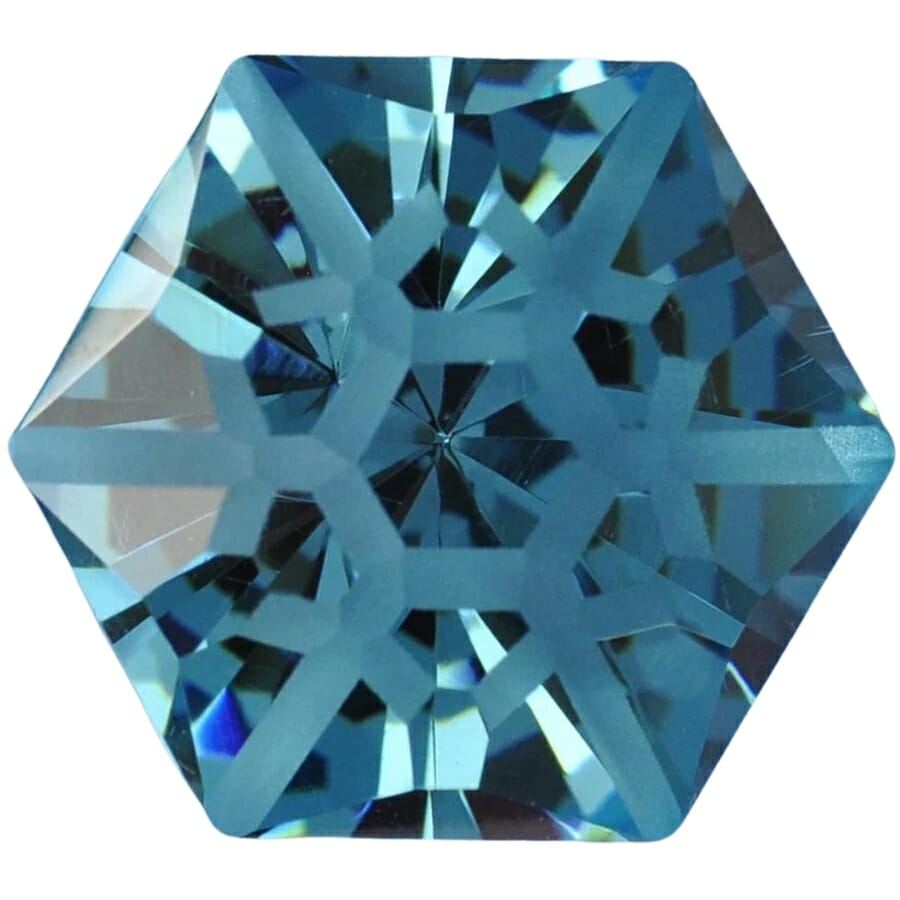
Unlike real sapphires, which are found in nature, blue cubic zirconia is made by people in a lab. To make it blue like a sapphire, zirconium oxide powder is melted with other minerals like cerium or cobalt.
After the mixture is melted, it’s cooled and crystallizes into big chunks that are later cut into gemstone shapes. This stone is very shiny, and it costs a lot less to make than it would to dig up real sapphires.
So, to make more money, some people might try to pass off blue cubic zirconia as real sapphires. They are often cut and polished to look like sapphires. Just like real sapphires, they can be used in rings, necklaces, and other jewelry.
But there are ways to tell the difference. For example, blue cubic zirconia is usually perfect, but real sapphires often have small flaws.
Also, if you look at blue cubic zirconia under a microscope, you might see gas bubbles, which you won’t see in real sapphires. With this information, buyers can avoid buying fake sapphires made of blue cubic zirconia.
How you can identify “blue cubic zirconia” being sold as real sapphire
Do a hardness test
Sapphires are one of the hardest gemstones, second only to diamonds. If you find that the stone gets scratched easily, especially by a piece of glass or metal, it’s likely blue cubic zirconia instead of a sapphire.
Evaluate the weight
Sapphire is a lot heavier than cubic zirconia. If you have a scale that can measure small differences in weight, you might find that a stone being sold as a sapphire weighs more than it should. But this could be hard to figure out without a real sapphire to compare it to.
Observe the sparkle
The sparkle of cubic zirconia is different from the sparkle of sapphire. It often sparkles (or “fires”) with more colors than a sapphire.
If the stone sparkles in a rainbow of colors, it might be a cubic zirconia instead of a sapphire, which usually sparkles in a more subdued, deeper way.
Coated Blue Stone
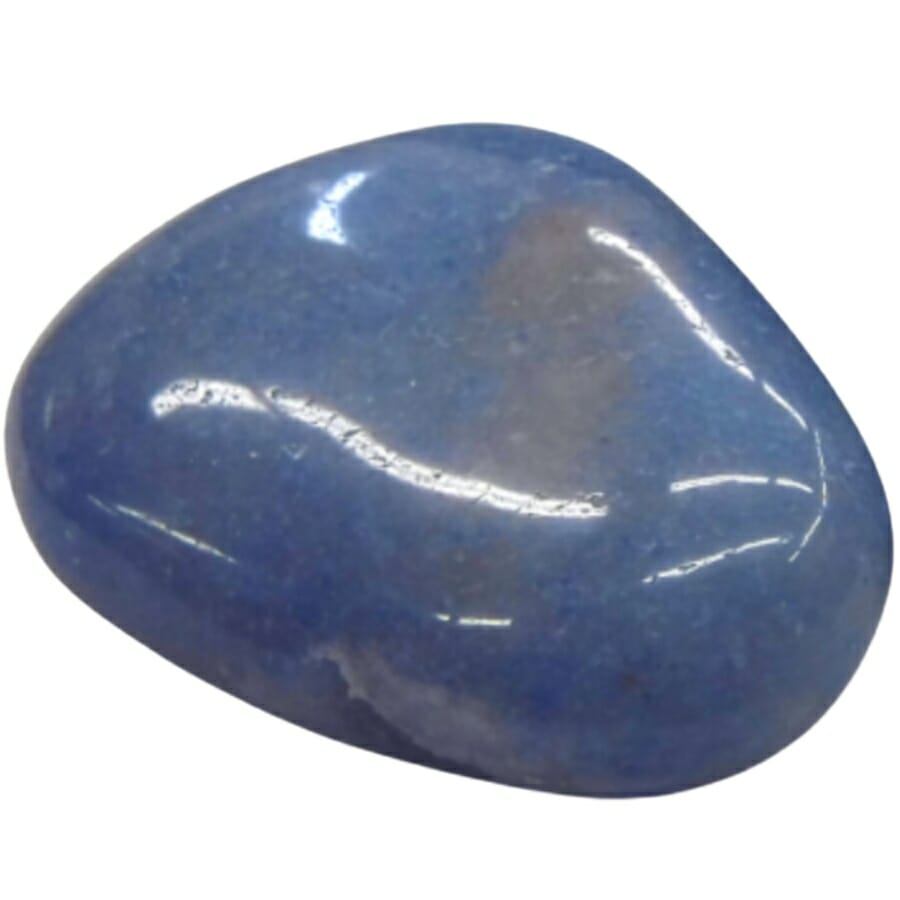
Coated blue stone is a term for low-quality stones or crystals that have been given a thin layer of blue color to make them look like sapphires.
This process of coating can be done with different things, like colored films or special chemicals, to make the stone look blue and shiny. These coatings can be put on using methods like vapor deposition, in which the coating material is turned into a vapor and allowed to settle on the stone, bonding to its surface.
Once the stones are covered, they might look like real sapphires to someone who hasn’t seen them before. They are used in this way to trick buyers. These fake sapphires can be sold as rings, earrings, or pendants, among other things.
Compared to real sapphires, the price might be good, which could make people want to buy them. But over time, the blue coating might start to chip or wear away, revealing the worse stone underneath.
If someone thought they were buying a real sapphire, this can be a big letdown. Buyers need to know about coated blue stones so they don’t get tricked into buying a fake sapphire.
How you can identify “coated blue stone” being sold as real sapphire
Check color consistency
The color of a real sapphire is the same all the way through the stone. Around the edges or on the facets of a coated stone, the color might look different or lighter in some places. If the blue color looks like it was painted on or is just on the surface, it’s probably not a real sapphire but a coated stone.
Inspect the surface
If a fake sapphire has been worn a lot, its blue coating may start to peel or chip over time. If the blue color is wearing off or looks uneven, it’s probably not a real sapphire but a coated stone.
Perform a scratch test
Real sapphires are very hard and don’t scratch easily. If you gently run a pin or other sharp object over the surface and it leaves a scratch, you are probably dealing with a coated stone, which is softer than a real sapphire.
Glass Sapphire
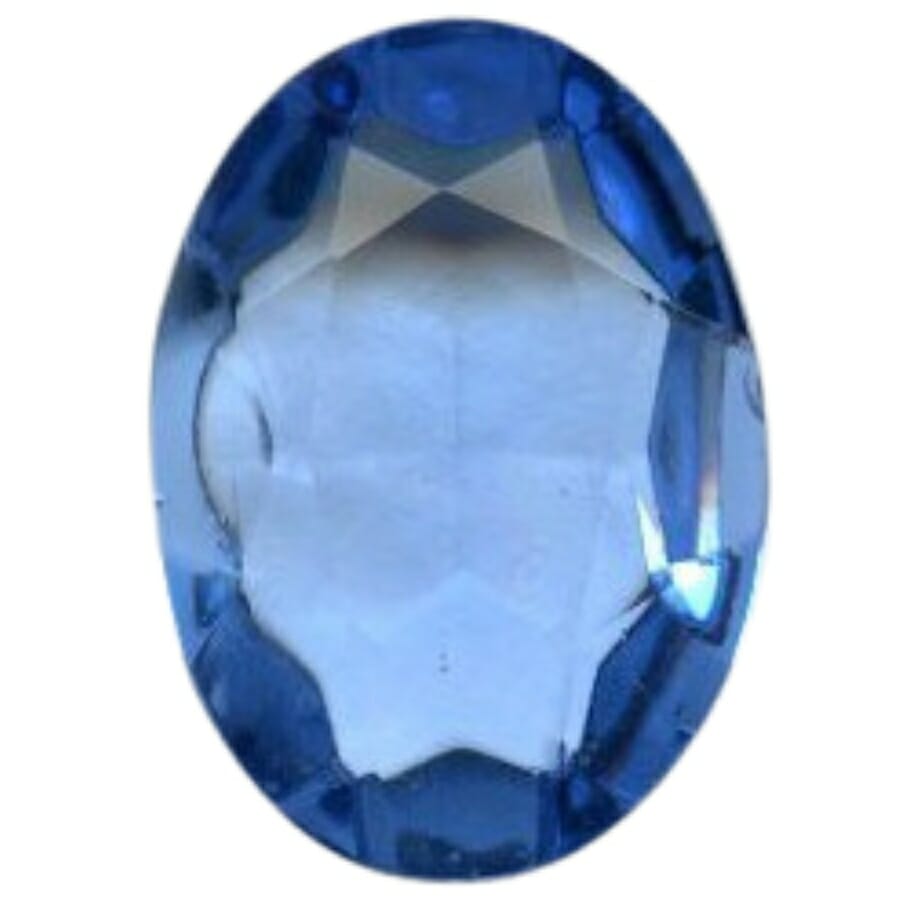
Glass sapphire is just colored glass that has been made to look like a real sapphire. To make glass sapphire, sand, soda, and lime are heated to a very high temperature until they melt together.
Some metals or chemicals are added to the molten glass while it is still hot to give it that blue sapphire color.
When the mixture cools, it turns into a blue glass that can be cut and polished just like a real sapphire. It is then cut into shapes that look like gemstones, like a beautiful, shiny sapphire.
This fake sapphire is often sold as a ring, necklace, or pair of earrings. Since it’s much cheaper to make than real sapphires, it could be a good choice for people who want to save money.
Glass sapphires, on the other hand, are much softer and easier to scratch than the real thing. When someone tries to sell glass sapphire as real sapphire, it’s a trick to get more money for something that isn’t actually worth much.
Over time, glass sapphires won’t hold up as well, and if they get scratched or chipped, their true color might show. If you want to avoid getting a fake sapphire, it’s always best to know what to look for.
How you can identify “glass sapphire” being sold as real sapphire
Check the weight
Glass is usually lighter than sapphire. If you have a real sapphire to compare it to, you might notice the glass sapphire feels significantly lighter in your hand or if you have a scale, it shows a lower weight than a real sapphire of the same size.
Do a scratch test
Sapphires are very hard gemstones and won’t get scratched easily, but glass is much softer. If you gently try to scratch the surface with a coin or a piece of steel and it leaves a mark, it’s likely a glass sapphire and not a real one.
Examine under magnifying glass
Looking at the stone under a magnifying glass can reveal a lot. Real sapphires might have tiny natural inclusions or flaws, while glass sapphires might have bubbles or streaks inside. If you see bubbles under the magnification, it’s a clear sign that the sapphire is actually glass.
Spinel
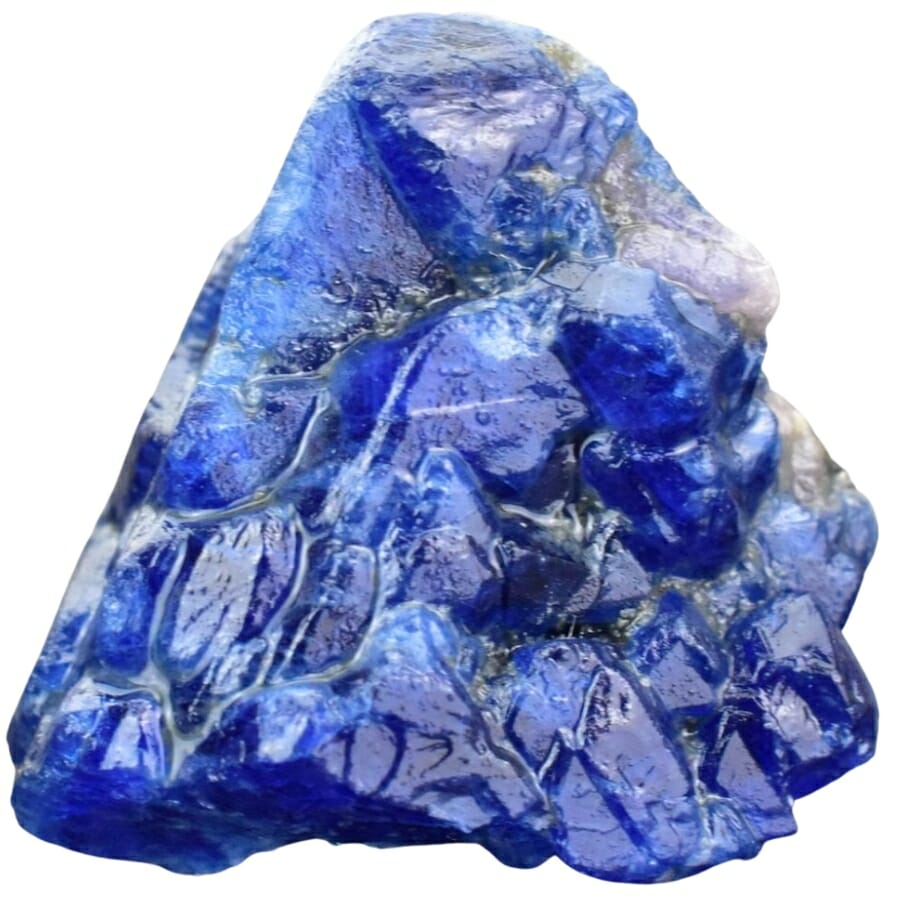
Spinel is a natural gem that comes from the earth, just like sapphire. It is made deep inside the earth under high temperatures and pressures, just like sapphires are. Spinel comes in many colors, including a blue that looks a lot like sapphire.
Now, why would someone try to sell a blue spinel as a sapphire? Well, sapphires are usually better known and worth more, so sellers may try to pass off spinel as the more expensive gem.
Both can be that beautiful blue that people like and to someone who doesn’t know better, they might look the same. It’s not a new trick to use spinel as a sapphire. Some of the most famous “sapphires” in history were actually spinel.
Both are beautiful and strong gemstones, which is good news. However, it’s important to know what you’re buying, especially when it comes to price.
Being able to tell the difference between spinel and sapphire can save buyers money and make sure they are getting the real thing.
How you can identify “spinel” being sold as real sapphire
Conduct a hardness test
Sapphires are super tough and rank 9 on the Mohs hardness scale, while spinel ranks 8. This means that sapphires are harder and won’t get scratched as easily as spinel. If the stone gets scratched more easily than a sapphire should, it might be a spinel.
Do a refractive index test
“Refractive index” is just a fancy word for how much the stone bends light. The way sapphires and spinels bend light is different, but you usually need a professional or special tool to check this.
If you’re really curious, a jeweler can look at the stone’s refractive index to tell if it’s a sapphire or a spinel.
Evaluate the color
Though both spinel and sapphires can come in blue, the blue of a real sapphire is often deeper and more vivid than the blue of a spinel. If the color of the stone is pale or not as vibrant, it might be a spinel being passed off as a sapphire.
Synthetic Sapphire
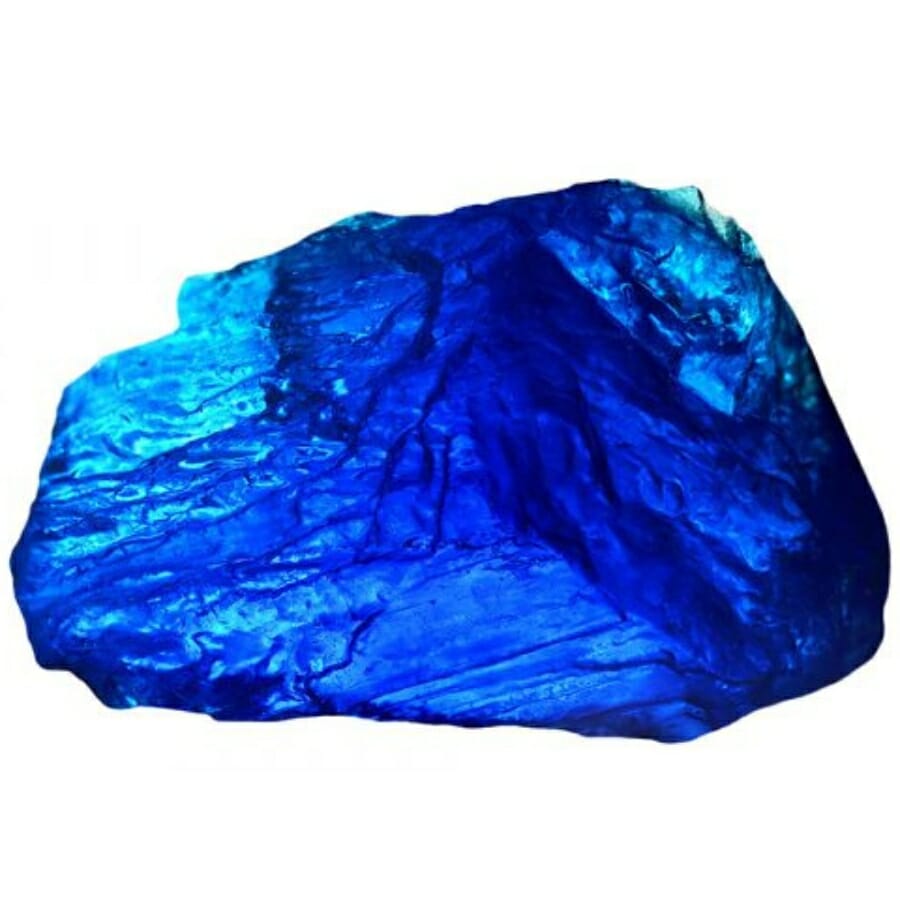
Real sapphires are mined from the earth, but synthetic sapphires are made in a lab. The “Verneuil process” or other methods are used by scientists to make these lab-grown gems.
They heat up powdered aluminum oxide, which is the same thing that real sapphires are made of, and some other things until they melt together. The mixture then hardens into large crystals that can be cut and shaped into gemstones.
The tricky part is that synthetic sapphires look a lot like real ones because they are made of the same material, just in a lab. They can be made into rings, necklaces, and earrings that look like real sapphires and sold for more than they’re worth.
The goal is to get more money out of people by making them think they are buying a real, natural sapphire.
But you can tell them apart from real sapphires in a few ways. Synthetic sapphires, for example, might look too perfect, with fewer flaws or inclusions. Under a microscope, you might see patterns or bubbles that show it was made in a lab.
Always know what to look for or ask a professional if you’re not sure, so you don’t end up paying real sapphire prices for a lab-made gem.
How you can identify “synthetic sapphire” being sold as real sapphire
Examine the appearance
Natural sapphires usually have some small flaws or inclusions, which are tiny bits of other materials or tiny cracks inside. Synthetic sapphires often look too perfect without any of these natural flaws. If the stone looks flawless or too perfect, it might be synthetic.
Check for bubbles
Sometimes, synthetic sapphires have tiny bubbles inside of them, which you would never find in a natural sapphire. If you look closely or use a magnifying glass and see small bubbles, it’s probably a fake sapphire.
Observe for color uniformity
Because of how they formed in nature, natural sapphires may have different colors or colors that are not even. Because they were made in a lab, the color of most synthetic sapphires is very even through the stone. If the color is too uniform, it could mean that the sapphire is made in a lab.
How To Tell If Sapphire Is Real Vs Fake
If you look at how a piece of sapphire is made, you can tell if it’s real or not. By observing these characteristics you can be sure that your gem is real and can enjoy the real beauty and value of real sapphire.
How To Identify Fake Sapphire When It’s Cut Or Polished
It takes a sharp eye and some knowledge to spot a fake sapphire, especially when it has been cut or polished. Fake sapphires can be made of glass, man-made stones, or natural gems like spinel that are made to look like real sapphires.
There are various methods such as examining its color, inclusions, and the way it interacts with light, which can help determine if a sapphire is genuine or a clever imitation.
Color examination
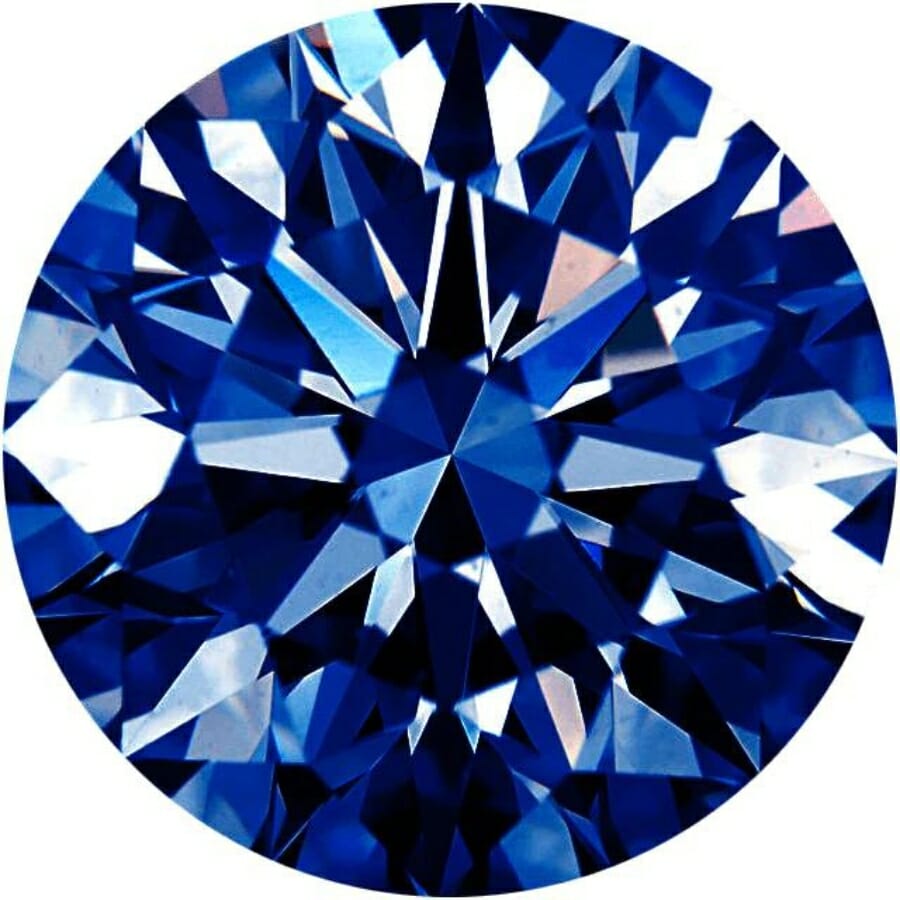
One smart way to tell a fake sapphire from a real one is to look at the color. Real sapphires can be a color called “royal blue,” but they can also be pink, yellow, or other colors.
They are all the same rich color and are neither too dark nor too light. On the other hand, fake sapphires may have spots where the color looks faded or blotchy, or the color may be uneven.
When you look at a real sapphire, it should sparkle and have a deep, clear color. Sometimes fake sapphires have colors that look like they were painted on. If you can, move the sapphire around while holding it up to the light.
The natural beauty of a real sapphire is shown by the way its color changes slightly depending on the light.
Take the sapphire to a professional jeweler as another option. They have special tools and lights to check the color and can help you figure out if the sapphire is real or not.
Plus, they can tell you what to look for in terms of color so that the next time you look at a gem, you can spot a sapphire like a pro.
Test the hardness
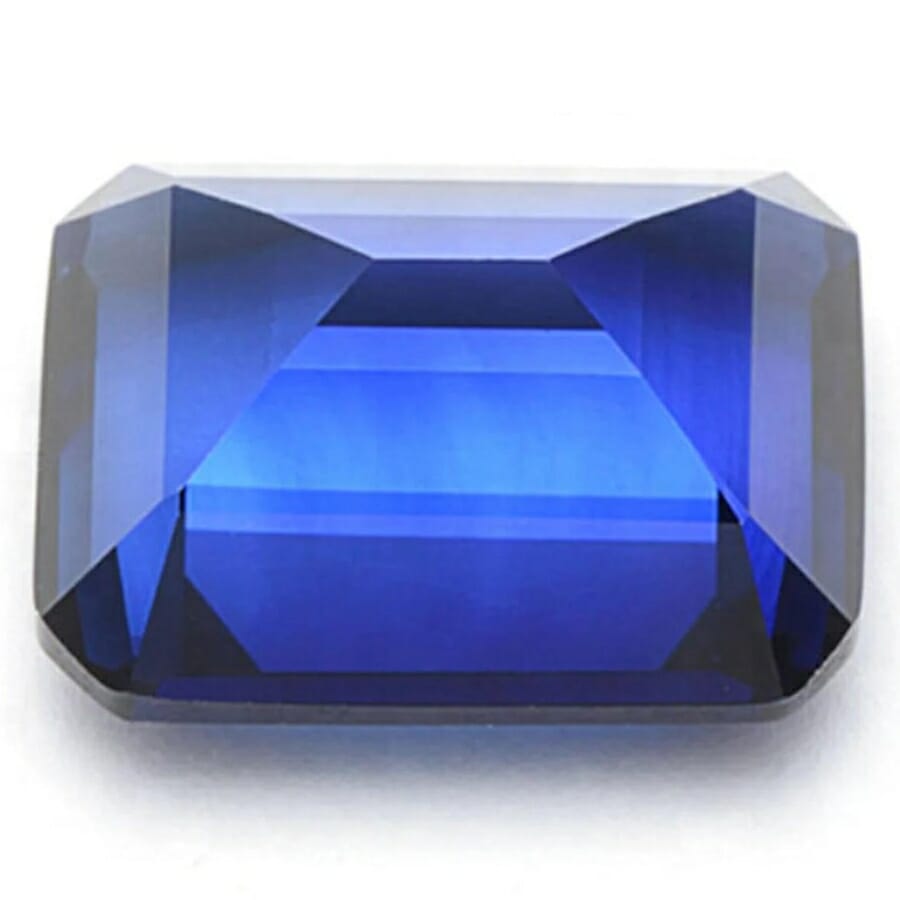
How hard a gemstone is can tell you much about it. Real sapphires are very hard, with a score of 9 on the Mohs hardness scale, which ranks minerals based on how easily they scratch other minerals.
Nothing is harder than a diamond. Because sapphires are so hard, they are strong and don’t get scratched easily.
Now, if you want to know how hard a sapphire is, you can try to scratch it with something made of steel, like a knife or scissors, which are lower on the Mohs scale.
If the steel leaves a scratch, the sapphire is probably not real. But be careful, because if the fake stone is soft, this method could damage it.
Taking the stone to a jeweler for a safer and more accurate test is a good idea. They use special tools to find out how hard a gem is without hurting it in the process.
By doing this, they can help you figure out if you are holding a real sapphire or a fake one. The hardness test is a fun way to learn more about whether your sapphire is real.
Evaluate the density
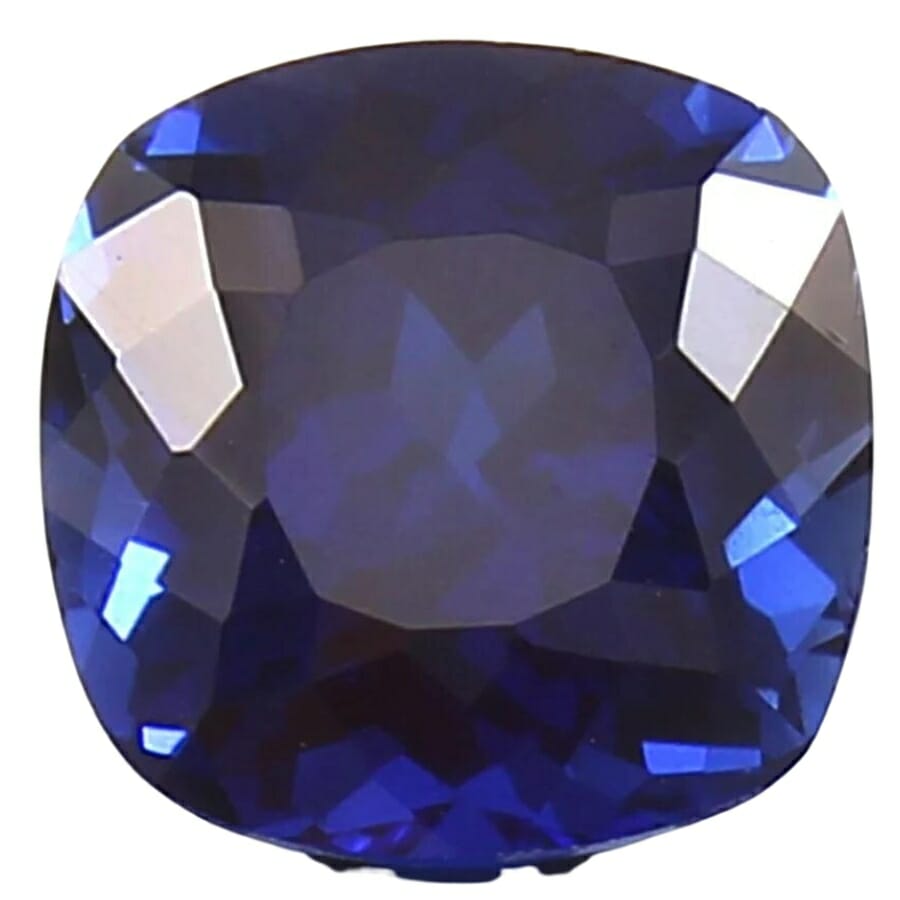
Density is how much matter there is in a certain space, and each type of gemstone has a different density. The density of sapphires is about 4 grams per cubic centimeter, which is higher than that of many other gemstones.
How can you tell if a sapphire is real or fake based on its density? You’d need to do a displacement test, which is a small science experiment.
First, you’d have to find a container, put water in it, and mark where the water level is. Then, drop the sapphire gently into the water and mark where the water level is now.
The size of the sapphire is what makes the difference between the two levels. Next, you’d need to find the sapphire’s mass by weighing it accurately on a scale.
Now it’s time for math. To figure out how dense a sapphire is, you divide its weight by the amount of water it took up, which is its volume.
You might have found a great deal if the density is the same as a real sapphire, which is about 4 grams per cubic centimeter. But the sapphire is probably not real if the number is very different.
This can be tricky, and an adult or a jeweler who has the right tools to do this test correctly and safely might be able to help. Remember, it’s always best to get help from a professional when you’re not sure.
How To Identify Fake Sapphire When It’s Raw
When it’s raw and uncut, it can be hard to spot a fake sapphire, but if you know what to look for, you can become quite the gem detective. Raw sapphires look rough and natural, not like the ones that have been cut and polished.
However, they should still have some of the same qualities as real sapphires. Learning about things like color, hardness, and the presence of natural inclusions can help you tell the difference between real sapphire rough and fakes.
Check the color
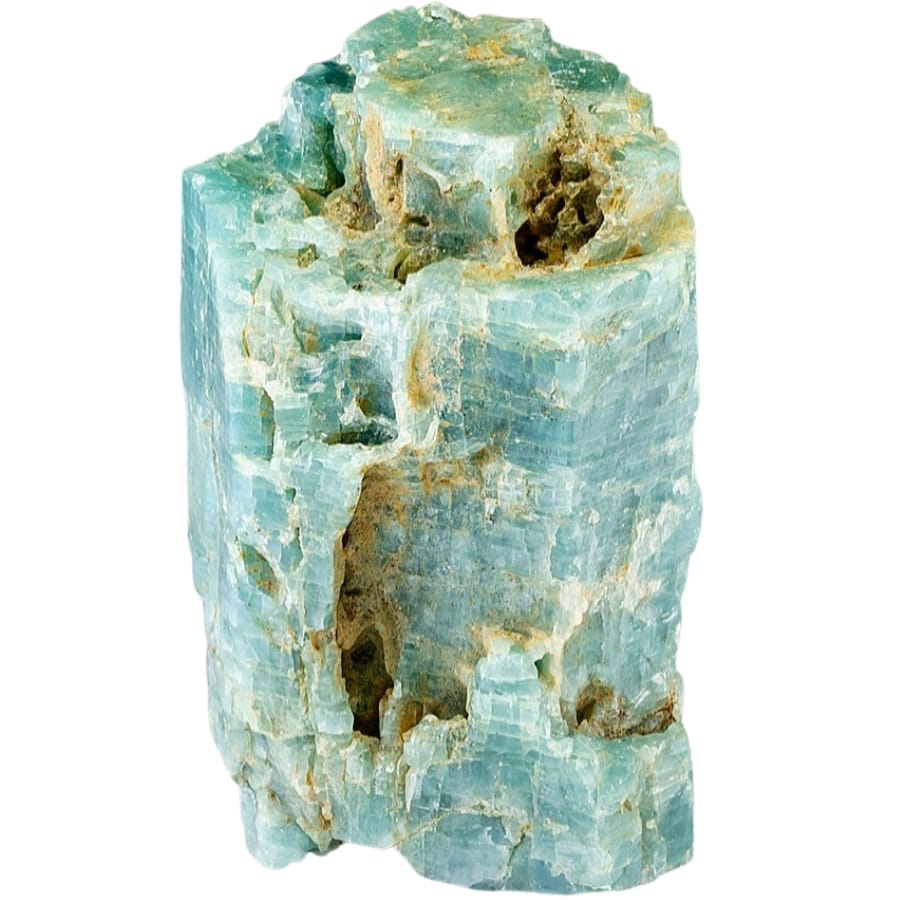
A good way to tell if a raw sapphire is real or not is to look at its color. Real raw sapphires are usually blue but can also be pink, yellow, green, or other colors.
Even though they are still rough and not shiny, the color should be nice and deep, not dull or washed out.
Fake sapphires or other blue stones may have colors that aren’t even or that don’t look like they belong. Sometimes, fake sapphires can look too bright or too perfect in color because they have been dyed to look good.
Raw sapphires, on the other hand, still look like rocks, so their color is uneven and natural. You could also look at pictures of real raw sapphires and compare the one you have to them.
This can be learned from the internet or from books about gemstones. You can also go to a local jeweler or someone who knows much about gemstones. They can help you understand how real raw sapphires change color on their own.
So, you’ll have a good idea of the real color of raw sapphire, which will make it easier to spot fakes!
Scratch the surface
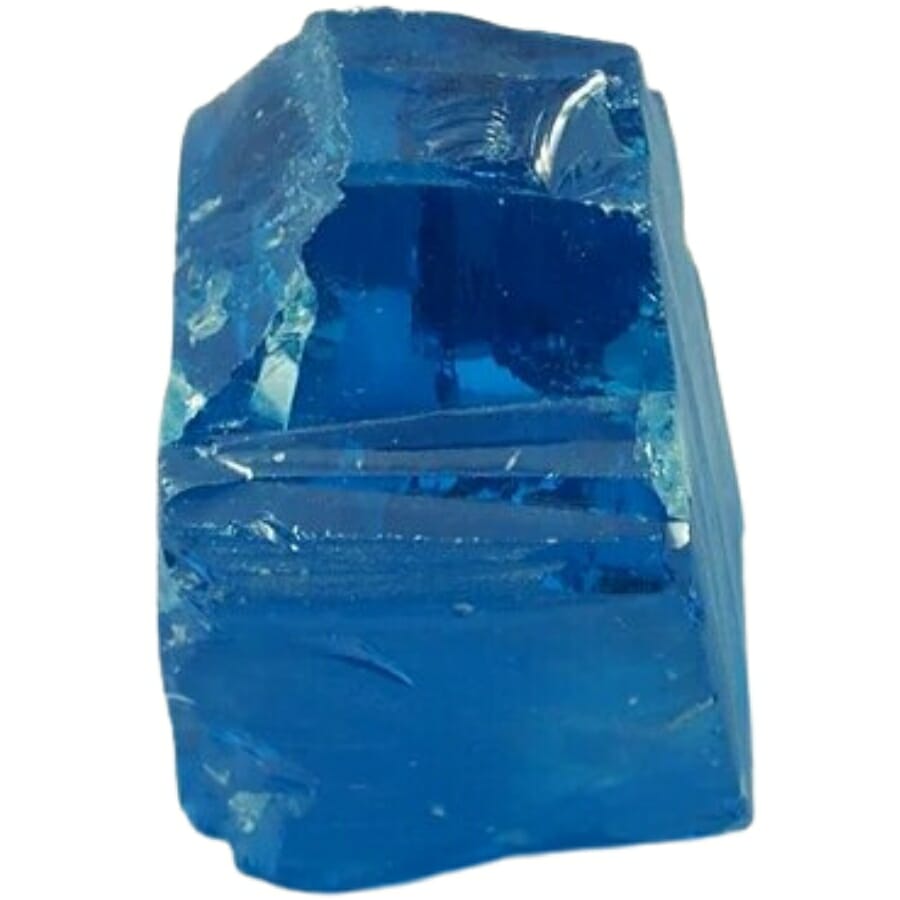
When you’re on the hunt to identify a real raw sapphire, checking how hard its surface is by doing a scratch test could be helpful. Real sapphires are really tough and fall just behind diamonds on the hardness scale.
They rank 9 out of 10 on the Mohs hardness scale, which is a fancy way to measure how hard a mineral is.
For the scratch test, find an item with known hardness, like a steel file (which is usually around 6.5 on the Mohs scale). Try scratching the surface of the raw sapphire gently.
The steel file shouldn’t leave any mark if it’s a real sapphire. But you’ll likely see a scratch if it’s a fake or softer stone. Be very gentle though, you don’t want to damage a potential gem!
Now, this method has its risks and it’s not always the most accurate. It’s way better to get help from a professional jeweler or a gemologist to test the hardness. They have special tools and knowledge to do these tests safely and accurately.
Remember, while playing detective is fun, sometimes calling in the pros is the best way to find out if your raw sapphire is the real deal!
Evaluate the density
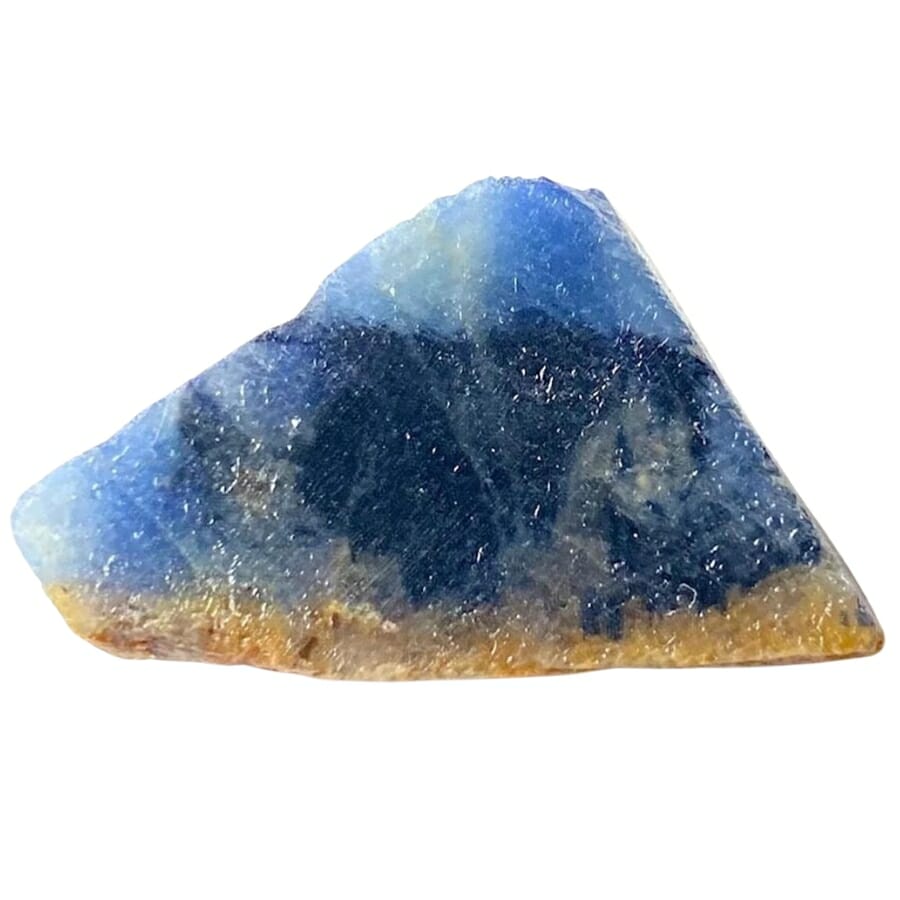
One cool way to tell if a raw sapphire is real is to look at how heavy it is. Every kind of stone has a different density, which is like a fingerprint. About 4 grams per cubic centimeter of sapphire is how dense it is.
To find out how dense something is, you’d have to do a cool experiment called a displacement test.
First, get something to hold water and fill it up. Note how high the water is. Now, carefully drop the raw sapphire into the water to mark the new level.
Changes in the water level tell you how much space the sapphire takes up. Then, you’d use a scale to measure the sapphire’s weight.
Now, let’s do some math magic. Divide the weight of the sapphire by the amount of space it takes up (which is the difference in water levels).
If the result is around 4 grams per cubic centimeter, which is the known density of a real sapphire, it’s likely that you have a real sapphire. If it doesn’t seem right, it may be a fake.
It might be hard, and you should always ask an adult or a jeweler for help, especially if you want to make sure the measurements are right. A professional on board will make this detective work more precise and safer!

